If the art of Gustav Klimt (Baumgarten, 1862 - Vienna, 1918) fascinates you and you have not yet had the chance to visit the Belvedere Museum and the Klimt Foundation in Vienna, then the Roman exhibition in Palazzo Braschi dedicated to him, running until March 27, 2022, is really for you: it will be like totally immersing yourself in the Klimtian world, a true paradise for the eyes and the mind, or at least this was the feeling of the writer. First of all, because most of the more than two hundred works on display come from these two Viennese museum venues, which hold the ultimate in art by the Secession master (the exhibition was in fact born from the collaboration between the Belvedere in Vienna, the Klimt Foundation and the Sovrintendenza ai beni culturali di Roma Capitale), and furthermore, the exhibition project enjoys the curatorship of top experts on the artist (Franz Smola, curator of the Belvedere Museum, Maria Vittoria Marini Clarelli, Sovrintendente Capitolina ai Beni Culturali, and Sandra Tretter, deputy director of the Klimt Foundation in Vienna) who have thus devised an enjoyable and remarkably clear itinerary, with works well selected and well arranged in the layouts, and full of insights into Klimt’s entire production and his artistic parabola, including celebrated masterpieces such as Judith I and themes that have so far been dealt with to a lesser extent, such as the artist’s relationship with Italy.
Title of the exhibition is Klimt. The Secession and Italy through which the pivotal points of the exhibition itself are anticipated: on the one hand Klimt as the founder and main exponent of the Secession, and on the other his connection with the Bel Paese and Rome in particular. One thinks in fact of the Austrian pavilion designed by Josef Hoffmann where eight paintings by Klimt were proposed and which constituted one of the main places visited within theInternational Exhibition in Rome in 1911, or of the two Venice Biennales of 1899 and 1910; the exhibition has in fact the merit of bringing back to the Capital, 110 years later, an exhibition on Klimt. However, beyond the exhibition projects, he had the opportunity to travel to Italy during his lifetime, and we have evidence of his sojourns thanks to the letters and postcards that the artist wrote and sent from different cities to friends and especially to Emilie Flöge (Vienna, 1874 - 1952), his muse and close friend (or perhaps even more) of a lifetime who is probably portrayed in one of his masterpieces, The Kiss, unfortunately absent from the exhibition. Consider again the influence of the sight of Byzantine mosaics during his stay in Ravenna on his art, particularly the extensive use of gold leaf applied on canvas at the height of his golden age, which is discussed in detail in the two catalog essays devoted to Klimt’s “mosaic vision” written by Maria Vittoria Marini Clarelli and to the two Klimtian masterpieces compared, namely The Kiss and The Three Ages of Woman, written by Franz Smola. And finally, the acquisition of three of the artist’s paintings by three different Italian museum institutions, namely The Three Ages of Woman from the Galleria Nazionale d’Arte Moderna in Rome, Judith II from the Galleria Internazionale d’Arte Moderna di Ca’ Pesaro in Venice and the rediscovered Portrait of a Lady from the Galleria Ricci Oddi in Piacenza. All of which are addressed in the catalog and are clearly reflected in the exhibition itinerary.
Italy was the country that Klimt visited most often, here he exhibited most of his masterpieces at events of fundamental importance also because of the influence he exerted on Italian artists such as Vittorio Zecchin, Galileo Chini, Felice Casorati, as well as the sculptor Giovanni Prini. Italian critics also devoted much attention to the Quadri delle Facoltà commissioned from him by theUniversity of Vienna and eventually withdrawn after the criticism he received. The entire exhibition at Palazzo Braschi thus accompanies the visitor, as was the curators’ intent, in discovering the life and production of the famous artist through an unprecedented perspective, that of his relationship with Italy.

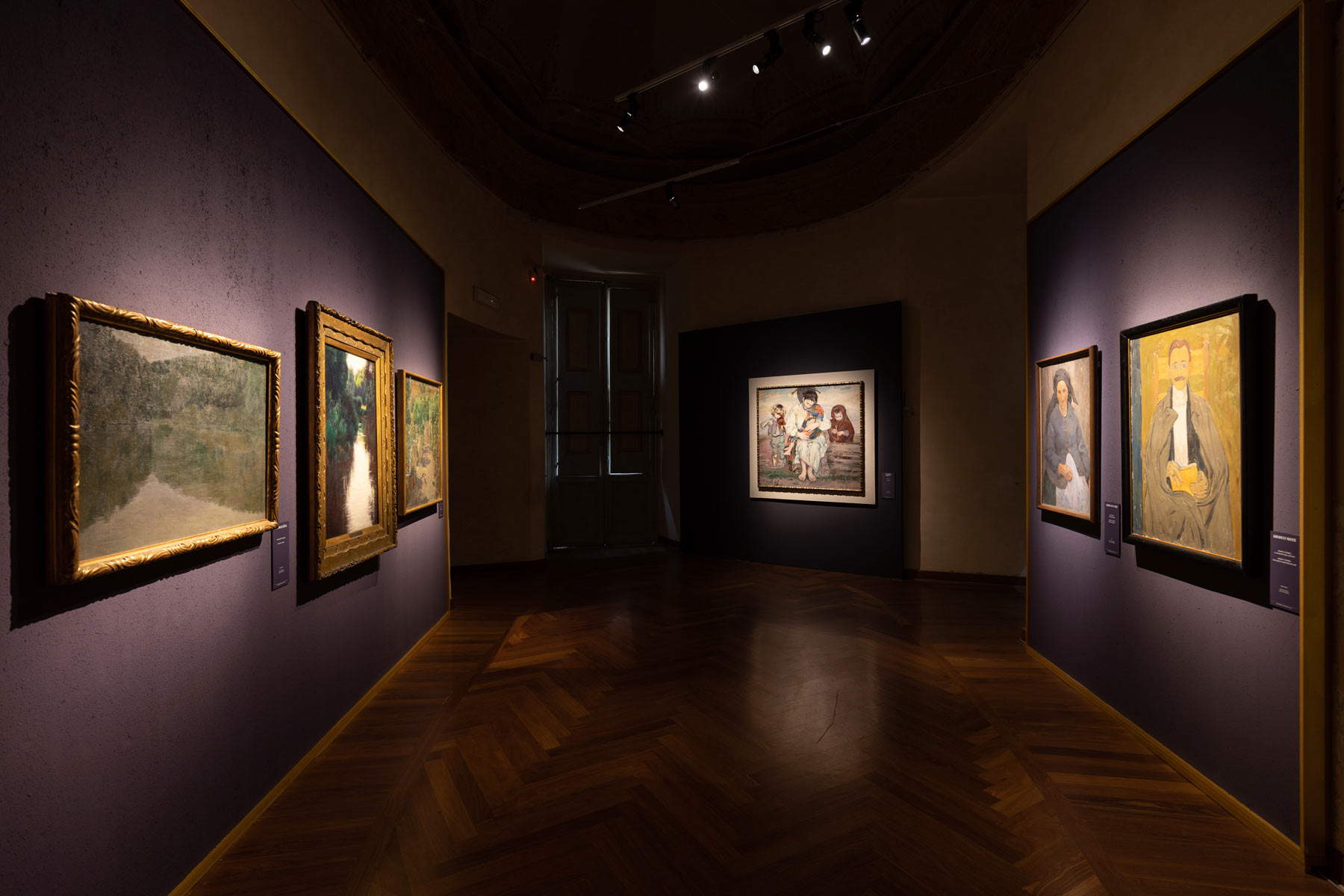
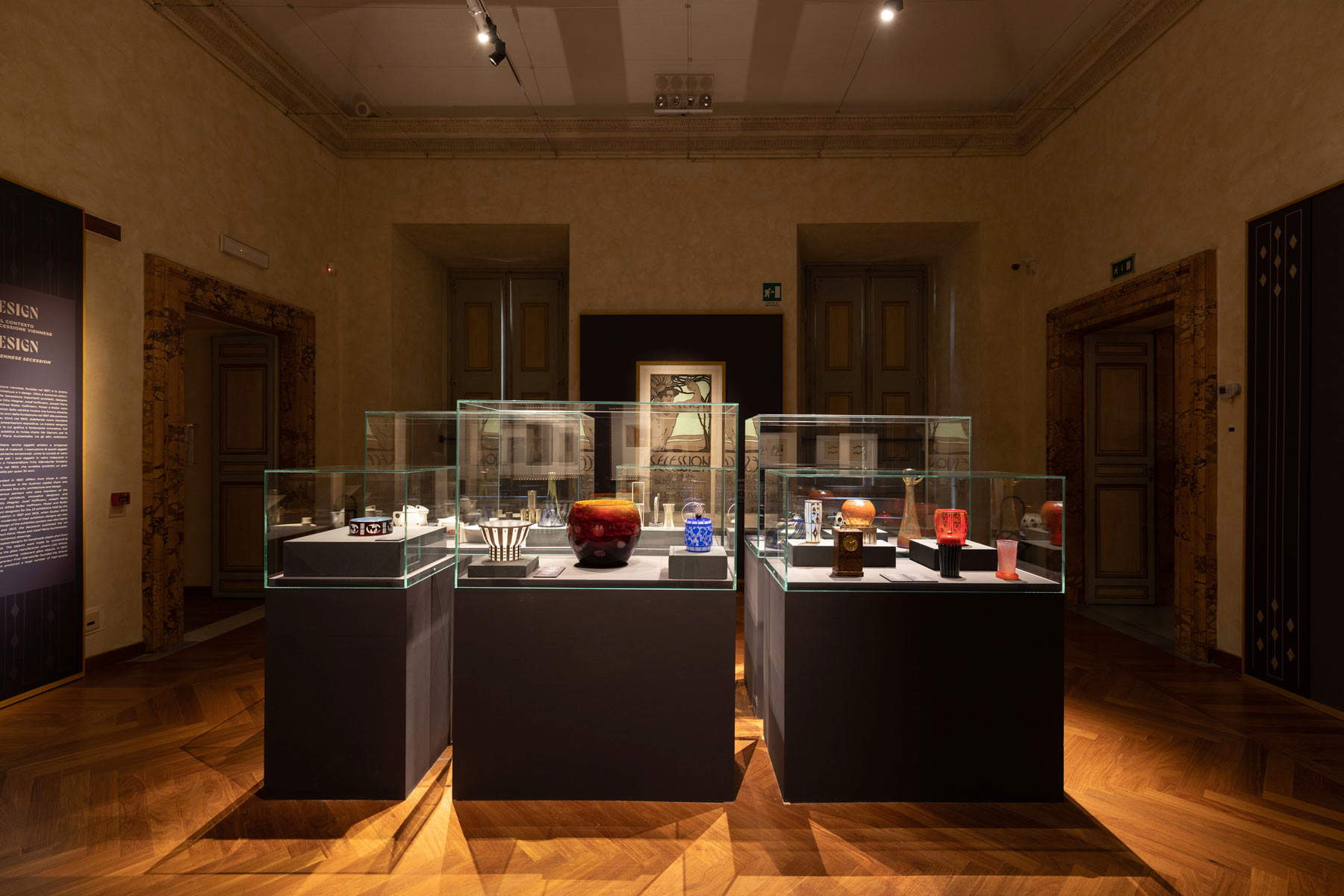

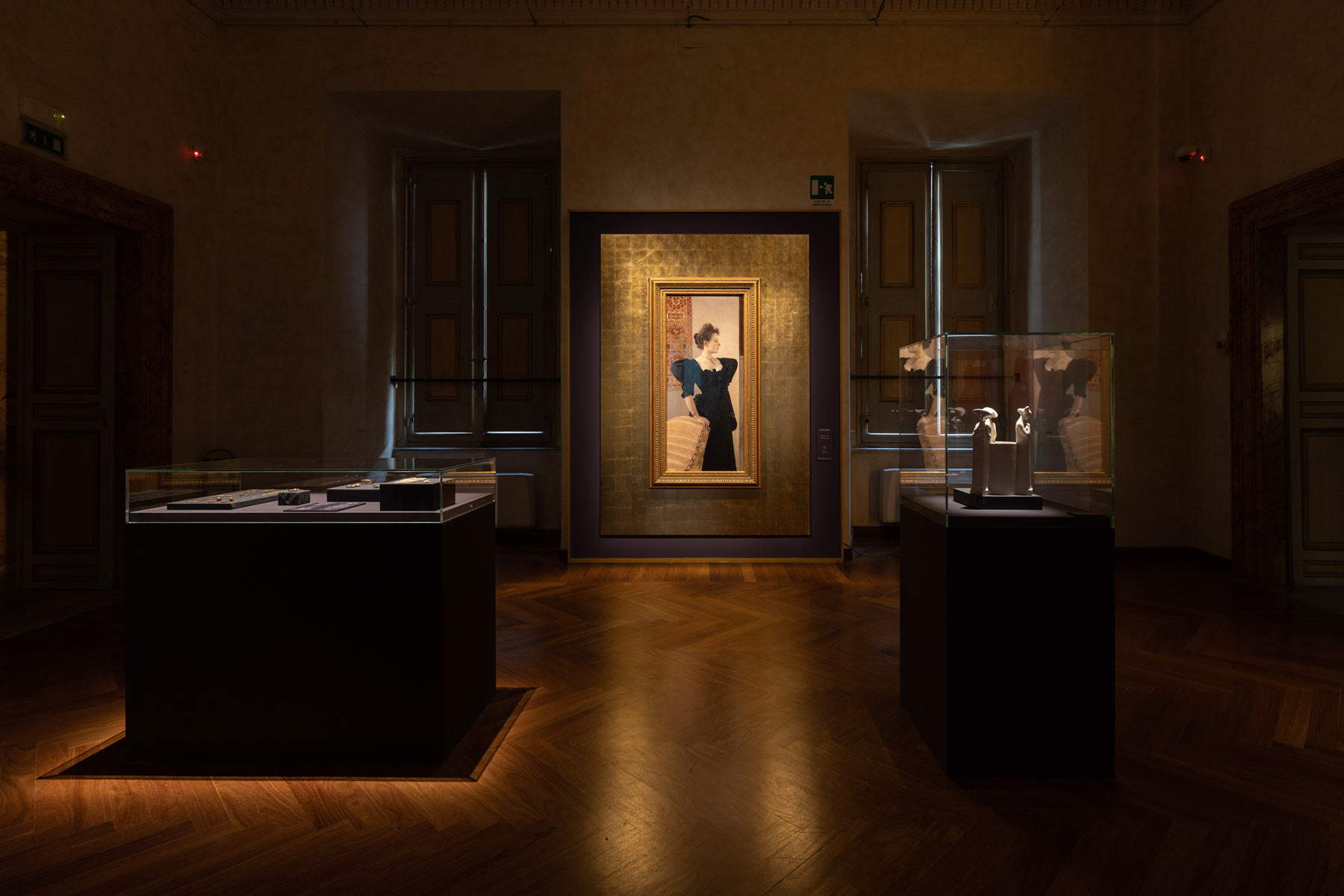
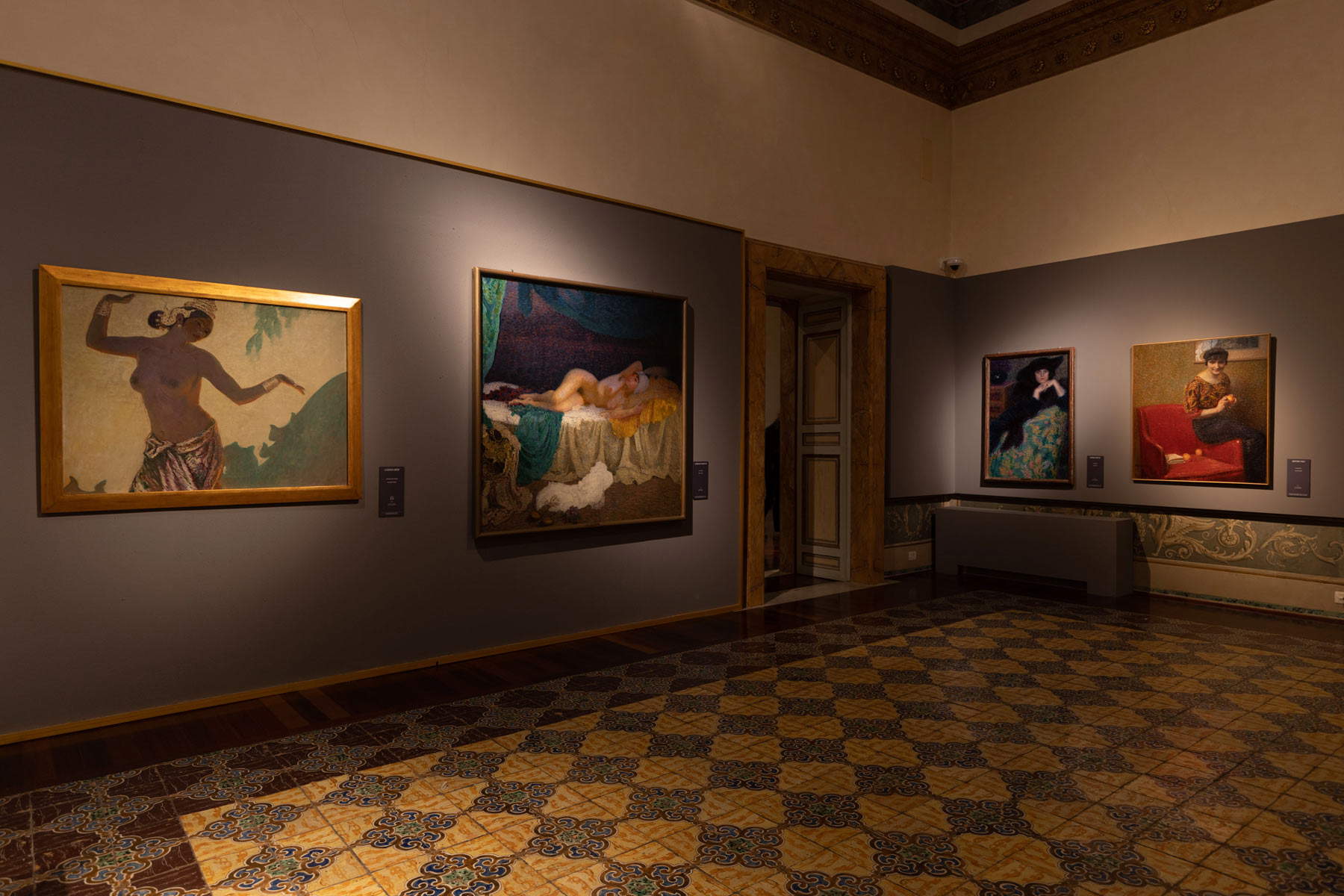
The public is introduced to the Vienna of the time by a large map dated 1895, the year when Venedig in Wien, one of the world’s first theme parks, as it is called in Sandra Tretter and Peter Weinhäupl’s essay, was opened, set up in the Venetian style complete with reproductions of historic palaces, an artificial canal and gondola ride included. The map presents the appearance of a modern, cosmopolitan city thanks to the construction in 1865 of a double tree-lined ring road, the Ringstrasse, along which are gardens, cafes and representative buildings. Klimt, together with architect Otto Wagner, also devoted himself to the construction and decoration of the Ring buildings in the last decades of the 19th century. Gustav and his brother Ernst had in fact attended the Vienna School of Arts and Crafts, which had given them the foundations, later refined, to establish around 1879 still as students, together with Franz Matsch, the Künstler-Compagnie that specialized in wall and ceiling decoration and , on commission from the architectural firm Fellner & Helmer, also produced paintings for curtains and theater ceilings (in the exhibition some works and sketches testify to the work of the Company, which dissolved due to Ernst’s sudden death in 1892). Among the most important commissions was the creation of ceiling frescoes for the two staircases of the new Burgtheater. In the meantime Gustav had joined the Wiener Künstlerhaus, the official association of Viennese artists, within which shortly before 1900 a split arose due to increasing pressure from younger members aimed at modernizing exhibition activity: Thus was born in 1897 the Secession-Association of Austrian Figurative Artists, which had twenty-three members including painters, sculptors and architects, of which Klimt was president for the first year. The third section of the exhibition exhibits a number of works by various Secessionists, including Carl Moll, Friedrich König, Koloman Moser, Wilhelm List, and Vlastimil Hofman, depicting mainly portraits, landscapes, or scenes of folk life, all of which, however, differ from Klimt’s style characterized by a more evanescent and nuanced painting as seen in the Lady before the Fireplace (1897-98). For the new headquarters, still known today as the Secession Palace and a masterpiece of Viennese Jugendstil architecture, Gustav designed a cubic building topped by a temple-like pediment, which Joseph Maria Olbrich later reworked by adding a dome covered with gilded laurel leaves and on the front door the motto Der Zeit ihre Kunst. Der Kunst ihre Freiheit(To time its art, to art its freedom). A motto in line with what Wagner had written in his Moderne Architektur: “Everything created with modern criteria must correspond to the new materials and demands of the present if it is to fit modern humanity.” A common principle of the Viennese Secession was atotal work of art where art, architecture and design were fused together. In this sphere, Vienna later became the center of modern design with the founding in 1903 of the Wiener Werkstätte by Koloman Moser and Josef Hoffmann, producing objects, jewelry, silverware, and furniture components with purist geometric forms (mostly vases and bowls are displayed here).
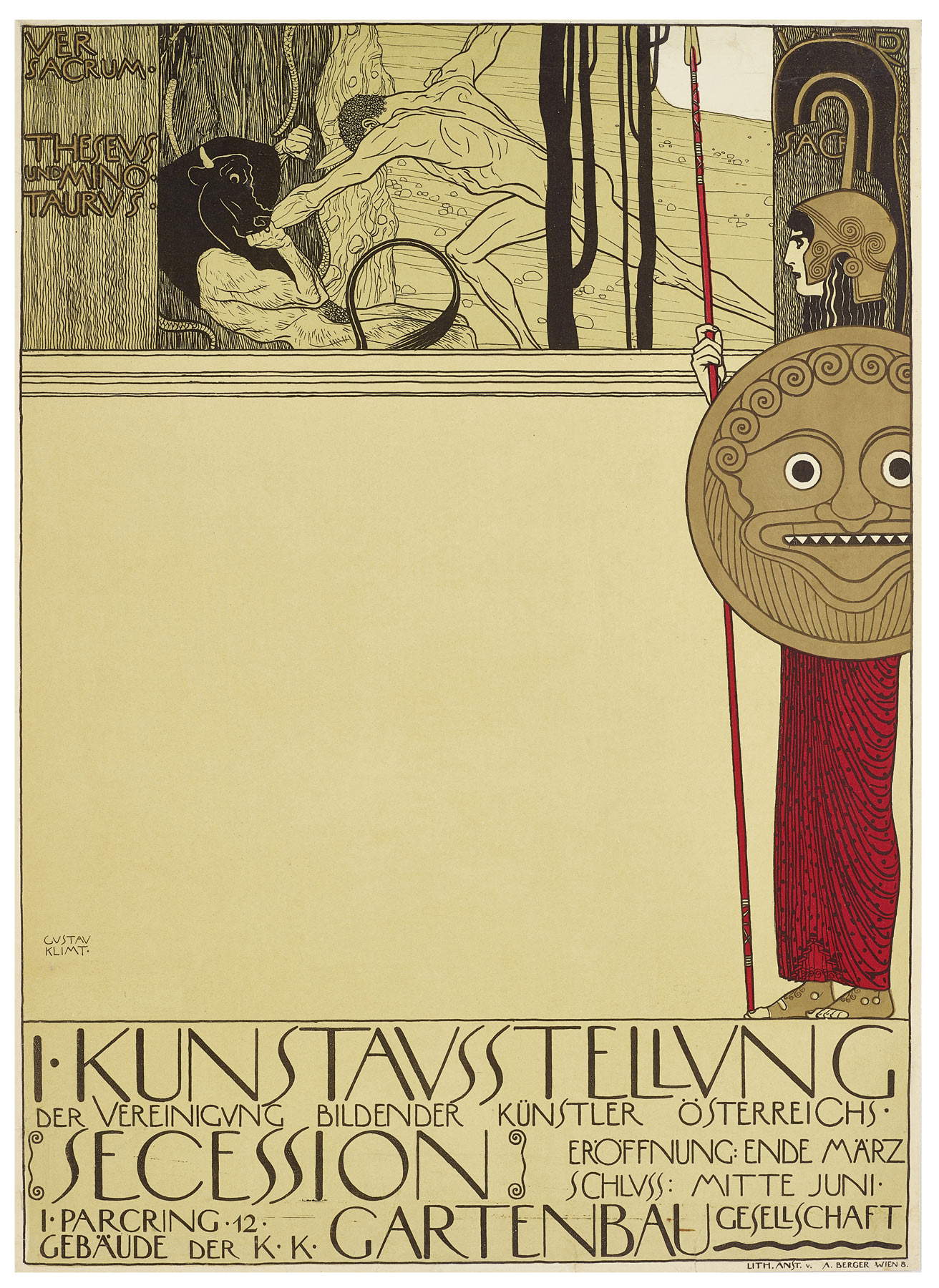
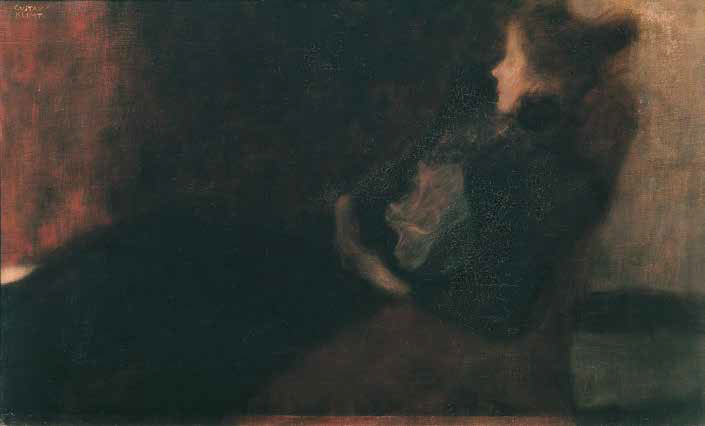

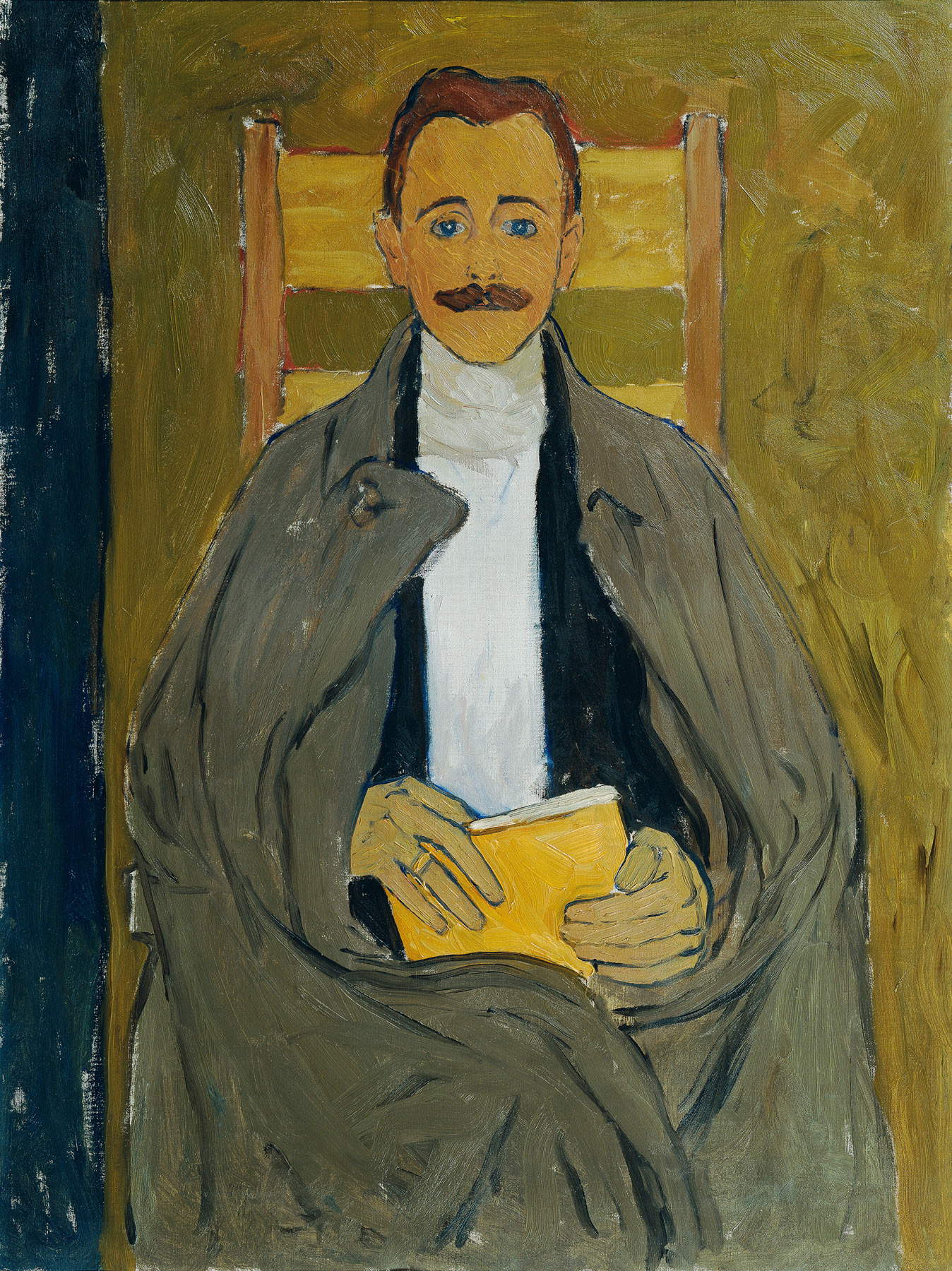
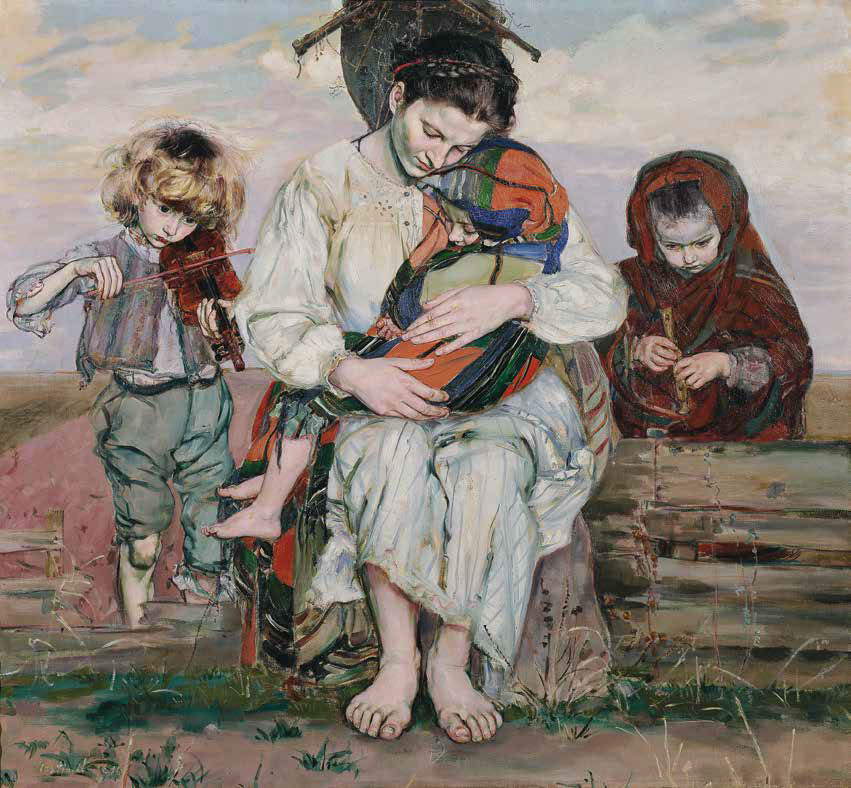


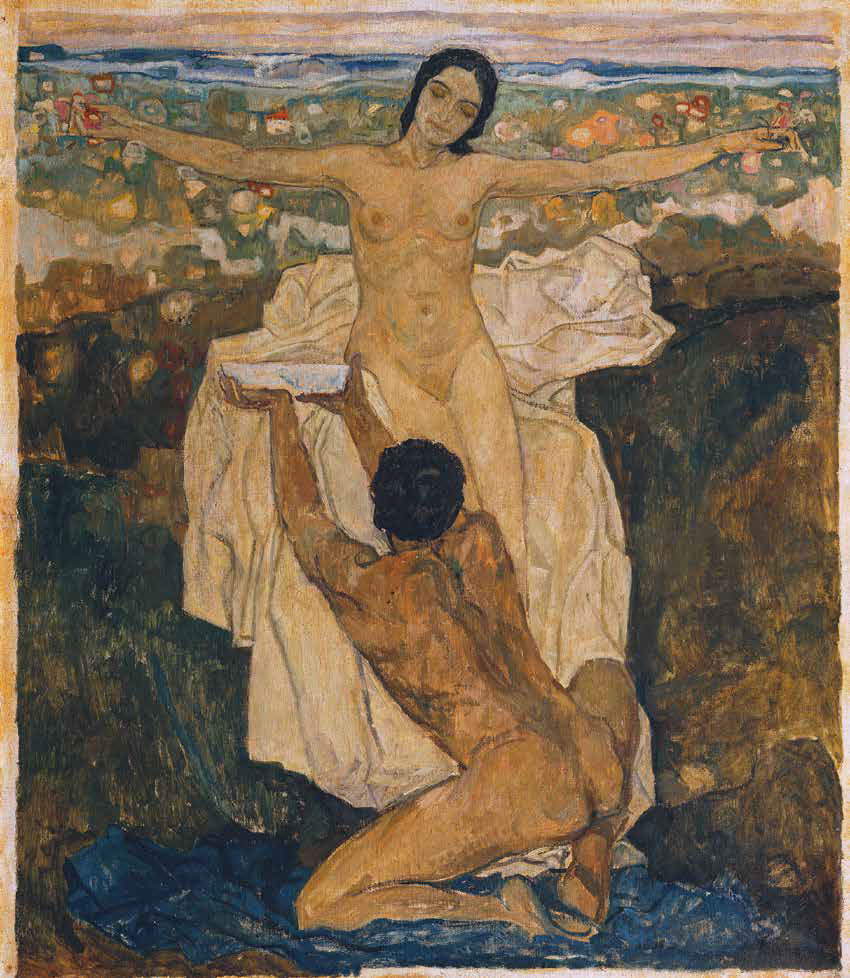

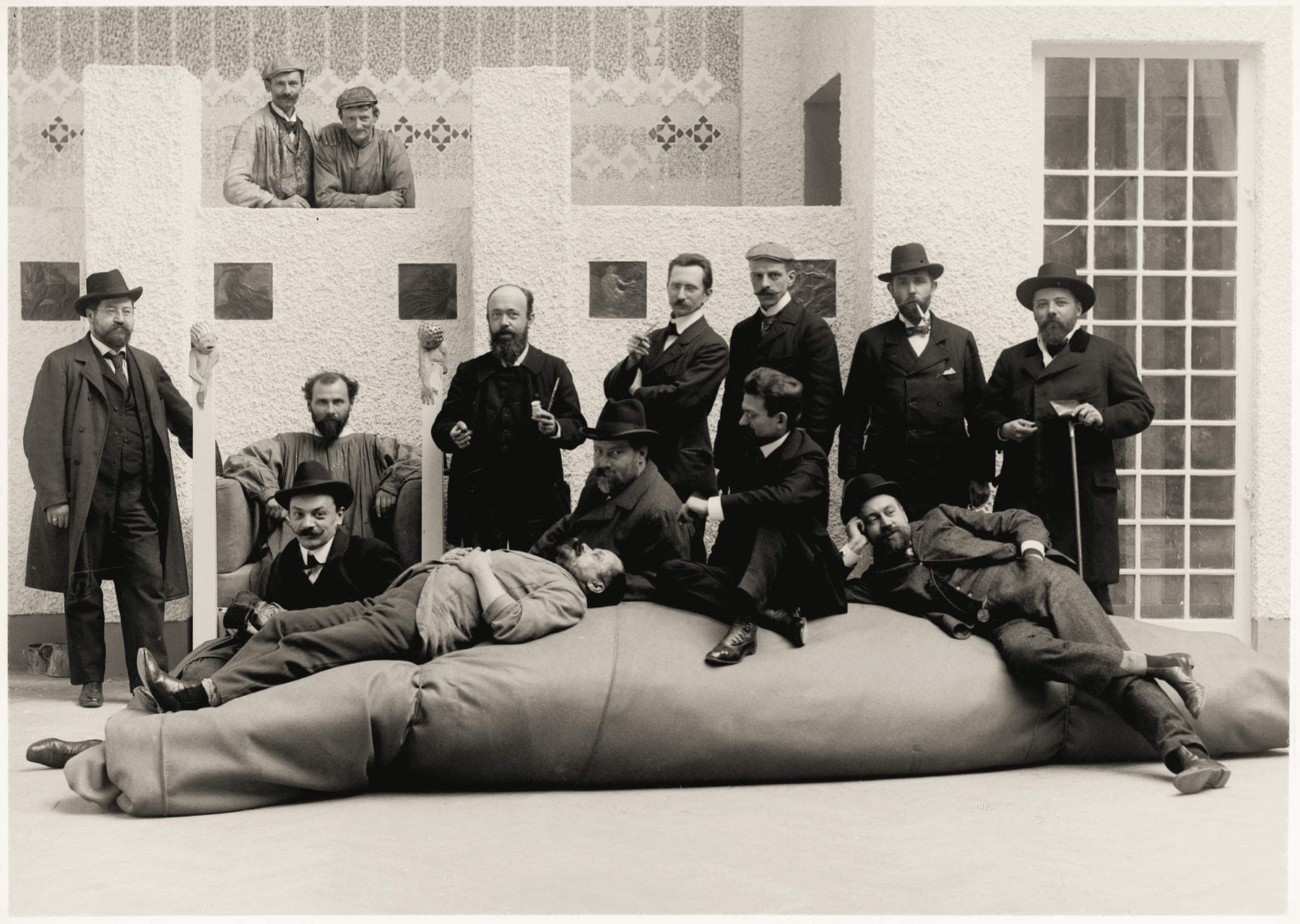
Gustav Klimt also designed the poster for the first Secession exhibition held in the spring of 1898: it depicted a nude Theseus fighting as befitting ancient art in the upper part, but deemed too offensive it was censored, covering the intimate parts of the heroic figure with a gimmick. Finally, there are illustrations for the covers of the Secession’s art magazine, Ver Sacrum, whose title referred to a mythological tradition of ancient Rome according to which those born in the spring, when they became adults were sent to found new settlements: it was published from 1898 to 1903, then came to a halt as conflicts subsequently arose within it, resulting in Klimt and seventeen other artists abandoning the association two years later; however, the latter remained active even on the exhibition side by uniting in the so-called Klimt Gruppe. The macro-theme of Klimt as the founder of the Secession is thus addressed, with the presence as mentioned above of paintings, drawings, and objects made by Klimt and his circle to give a good understanding of how it came to be and the milestones of an artistic movement that still fascinates with its decorative character. From here, the other macro-theme of the exhibition, namely Klimt’s relationship with Italy, is explicitly introduced through documentary evidence of his first trips to the Bel Paese between 1890 and 1913: he visited Italy at least eight times during this period.
Indeed, in the same large room where the design objects are centrally placed, some of the postcards that Klimt sent to Emilie Flöge on an almost daily basis to tell her where he was are on display. Thanks to these extraordinary documents it is now possible to reconstruct all the artist’s movements from one city to another: Trieste, Venice, Padua, Ravenna, Florence, Pisa, La Spezia, Verona, Riva del Garda. Klimt did not particularly like to travel with the exception of when he went every year in the company of Emilie to Lake Attersee in the Salzkammergut region. He also wrote his travel accounts on tickets and letters, and this gives us today the opportunity to learn about his impressions, such as the “life of revelry” led in Venice, that “Florentine art is not superior to Venetian art,” and “the mosaics of unheard-of splendor” he had seen in Ravenna.
It is inevitable then to be captivated by one of the artist’s most iconic and sensual works: the 1901 Judith, among the most successful examples of femme fatale that the painter produced throughout his output, thanks to the combination of seduction, sensuality and at the same time a dangerous creature for the murder of Holofernes. In the painting he also makes considerable use of gold leaf applied to the canvas along with oil paint-a technique that made him famous and recognizable throughout the world and that gives the work a shimmering appearance that draws the eye to it. Completing the room are works, including sculptures, of great sensuality made by artists who were influenced by Klimt, such as the poignant Amanti by Giovanni Prini of Genoa, or works expressing the strong eroticism of women in line with drawings of nudes made by Gustav in the early twentieth century: the Two Reclining Figures, a study for Serpents of Water II, are here in dialogue with Karl Borschke ’s At the Source of Life or Hugo Künhelt’s Medea, for example.
One then enters an “immersive” environment, in which Beethoven’s Frieze has been recreated on three walls of a room: on the occasion of the 14th Vienna Secession Exhibition held from April to June 1902, dedicated to Ludwig van Beethoven, a marble sculpture created by Max Klinger depicting the composer had been placed in the center of the room (a sketch is on display here), other artists had made various contributions, and Klimt had created along three walls of a side room a wall frieze over thirty-four meters long and two meters high. With his Frieze, Gustav intended to interpret the Ninth Symphony, starting with a group of female figures with their arms stretched forward floating in the water; these first meet nude figures with a young woman standing and a couple kneeling, who address a horseman, who in turn looks toward the more scenic wall in which one can recognize a monkey-like monster, three Gorgons, Death, other female figures daughters of the giant Typhoeus; farther away is crouched an almost skeletal figure of a woman in front of the snake-like body of the monster. The frieze continues with the solitary Poetry, while the Arts, the crouching female figures lead to the heavenly choir of angels, symbolizing happiness and absolute love. At the end of the 14th Exhibition, the frieze was not destroyed and is still permanently visible in the basement of the Secession Palace. It is truly exciting to be in the center of a room that is only visible in Vienna, surrounded by one of the artist’s most striking masterpieces thanks to its reproduction.
Another merit of the Palazzo Braschi exhibition is that it has reconstructed the original colors of the Faculty Paintings for the first time, thanks to machine learning andartificial intelligence, as part of a digital project by Google Arts & Culture. The Ministry of Education in Vienna commissioned Klimt and Franz Matsch to execute monumental allegories for the ceiling of the University’s Ballroom in 1894: one in the center and four other allegories of the Faculties. Dividing the tasks, Gustav chose to realize Philosophy, Medicine and Law. He began making them four years later, and in 1900 he presented Philosophy for the first time at the 7th Secession Exhibition. Both this and even more so the Medicine exhibited in 1901 triggered much criticism as being too sensual and erotic and too pessimistic, when on the contrary they should have communicated a positive and idealized view of the sciences. The University refused to place them in the ballroom, and Klimt relinquished the commission by returning the fee. Following vicissitudes, the paintings were transported to Immendorf Castle, which was burned down in 1945 resulting in the loss of the three paintings. We had evidence of these works only through black-and-white photographs, with the exception of the figure of Hygieia in the Medicine painting of which a color detail was known, as well as through the detailed accounts of the paintings’ colors written by critics to speak harshly of them. So thanks to these documents a research team was able to trace the true colors, and in the exhibition it is possible to see them in their original appearance.
Another theme of the artist widely addressed is the female portrait, whose technique changes over time as seen in the 1894 large-format Female Portrait of 1894 with an almost photorealistic appearance very different from the Lady with Cloak and Hat on a Red Background of 1897-98 done with an almost impressionistic painting. Klimt performed many pencil studies to find the optimal pose of his model. And again, the landscape painting to which Klimt devoted himself around 1900 and which is undoubtedly influenced by the views and places he saw every summer in the Salzkammergut lake region, in which the landscape becomes nuanced and harmonious to depict a serene and paradisiacal world, and his stay on Lake Garda.
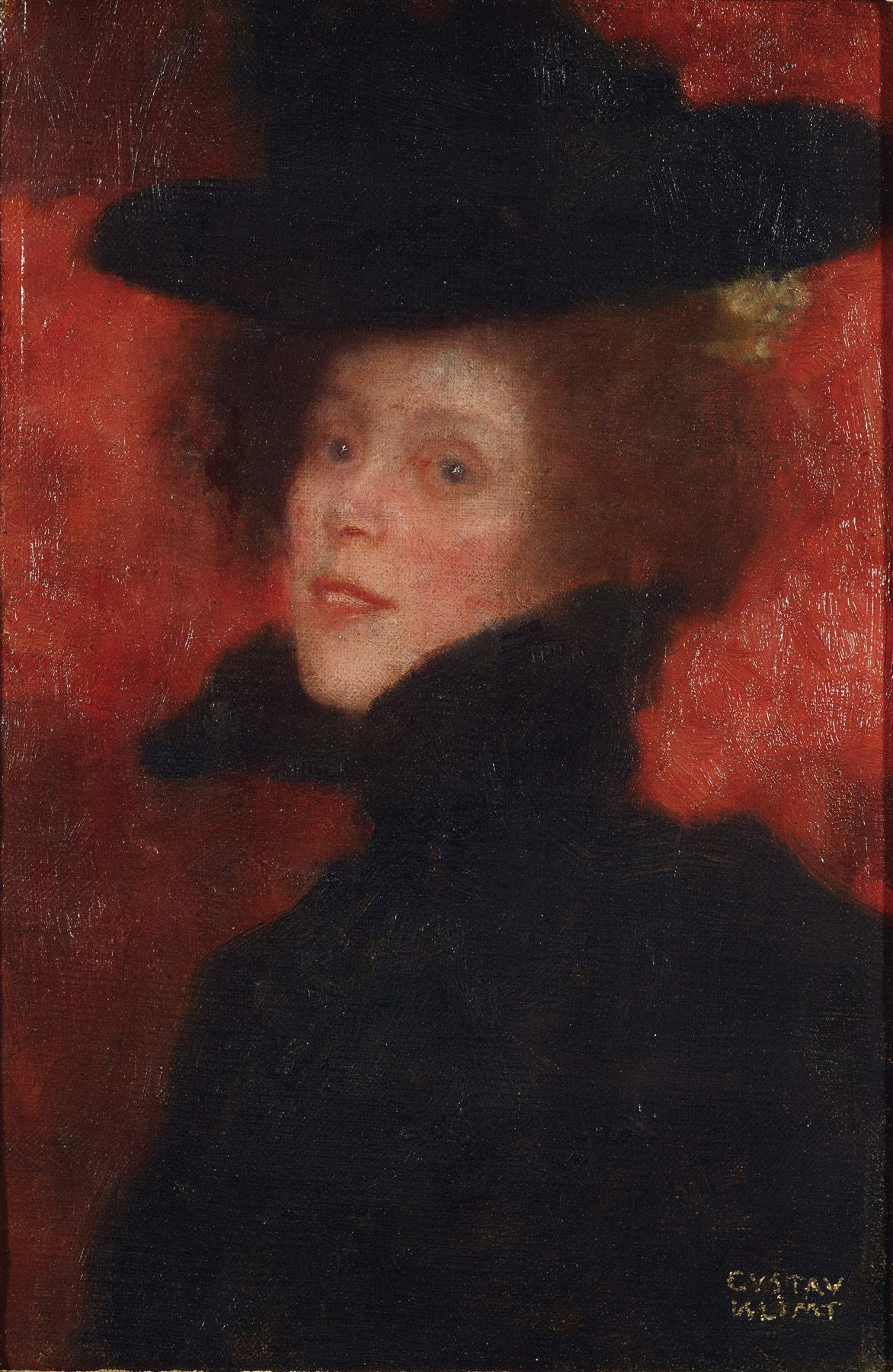

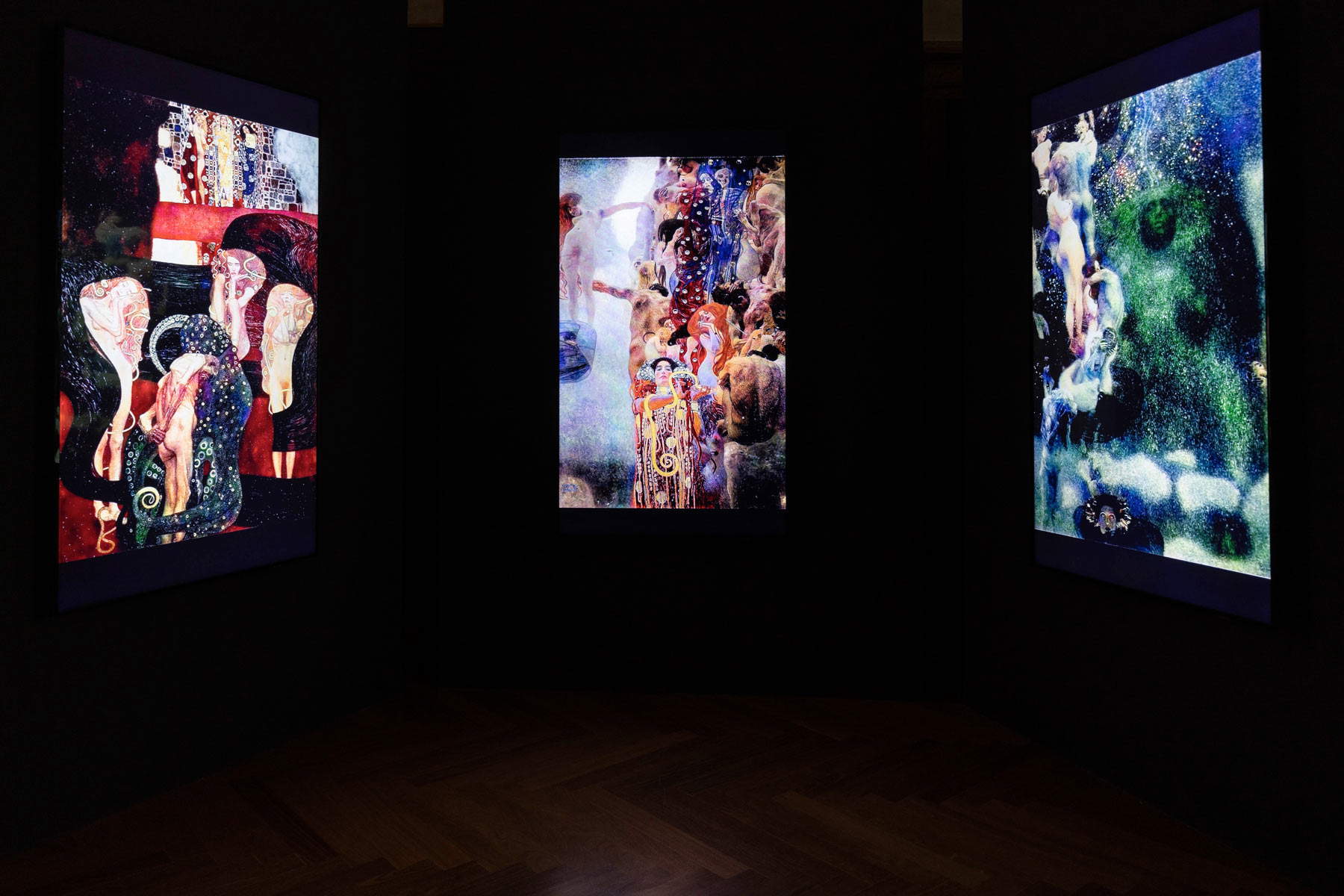
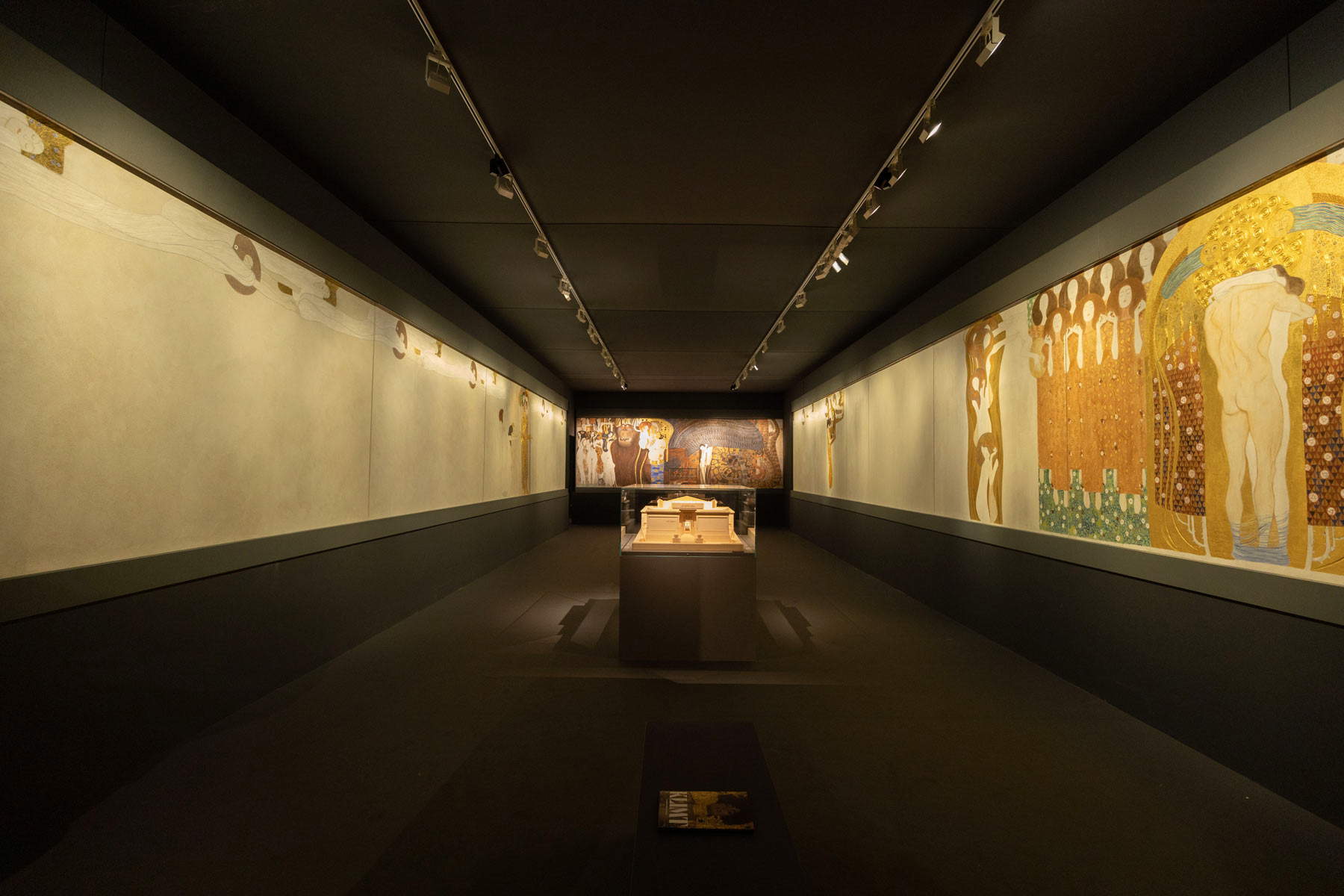
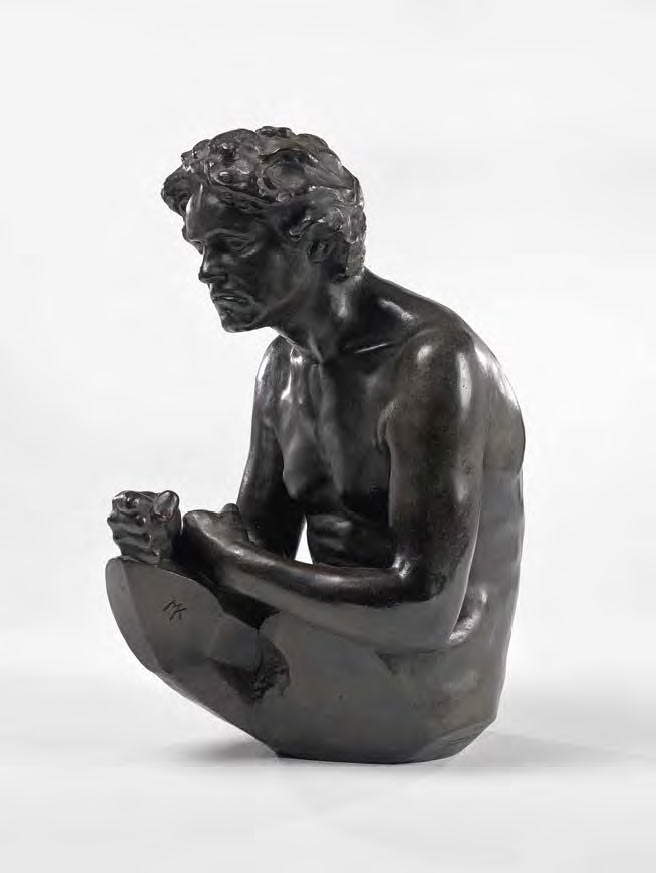
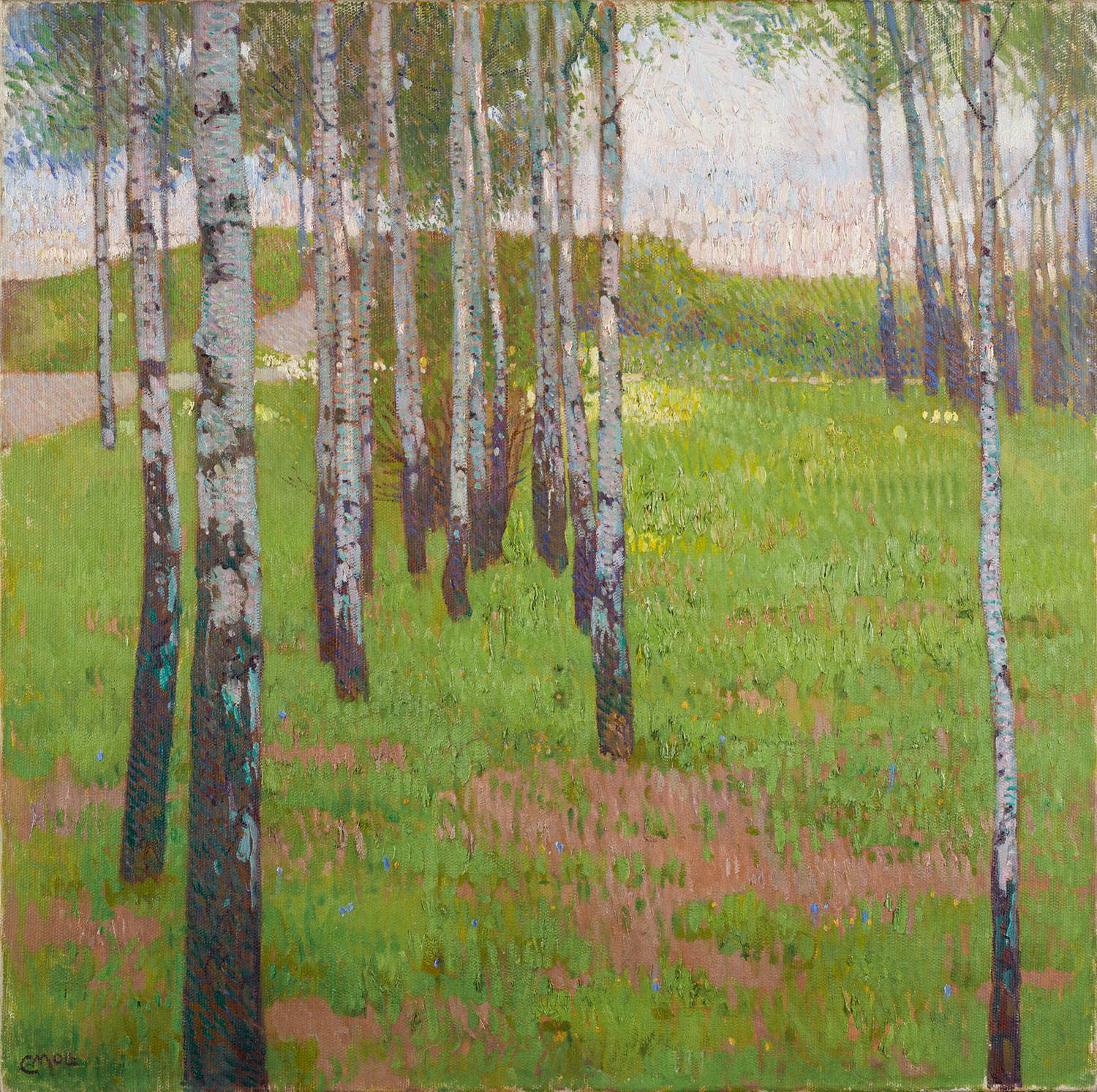


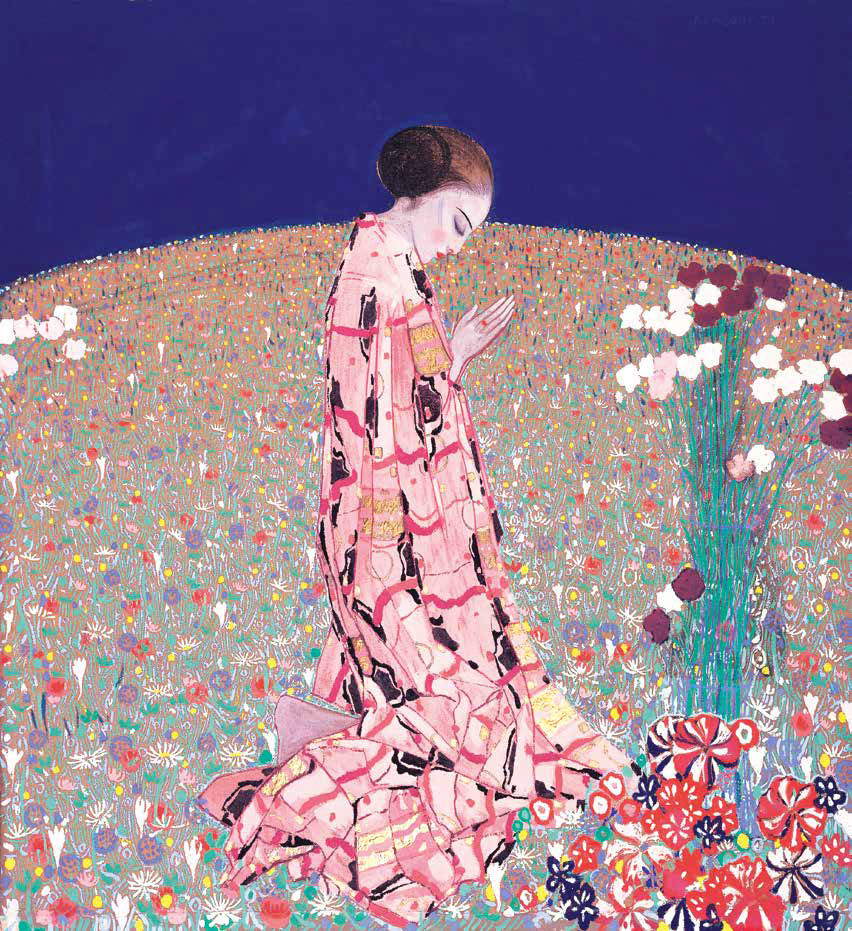

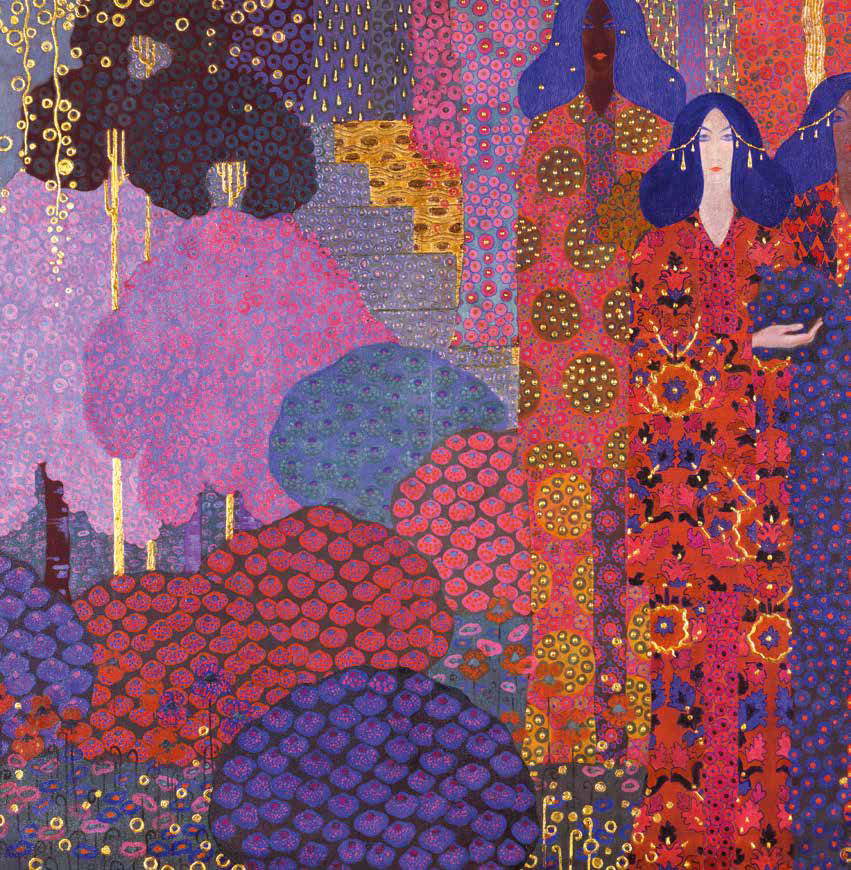

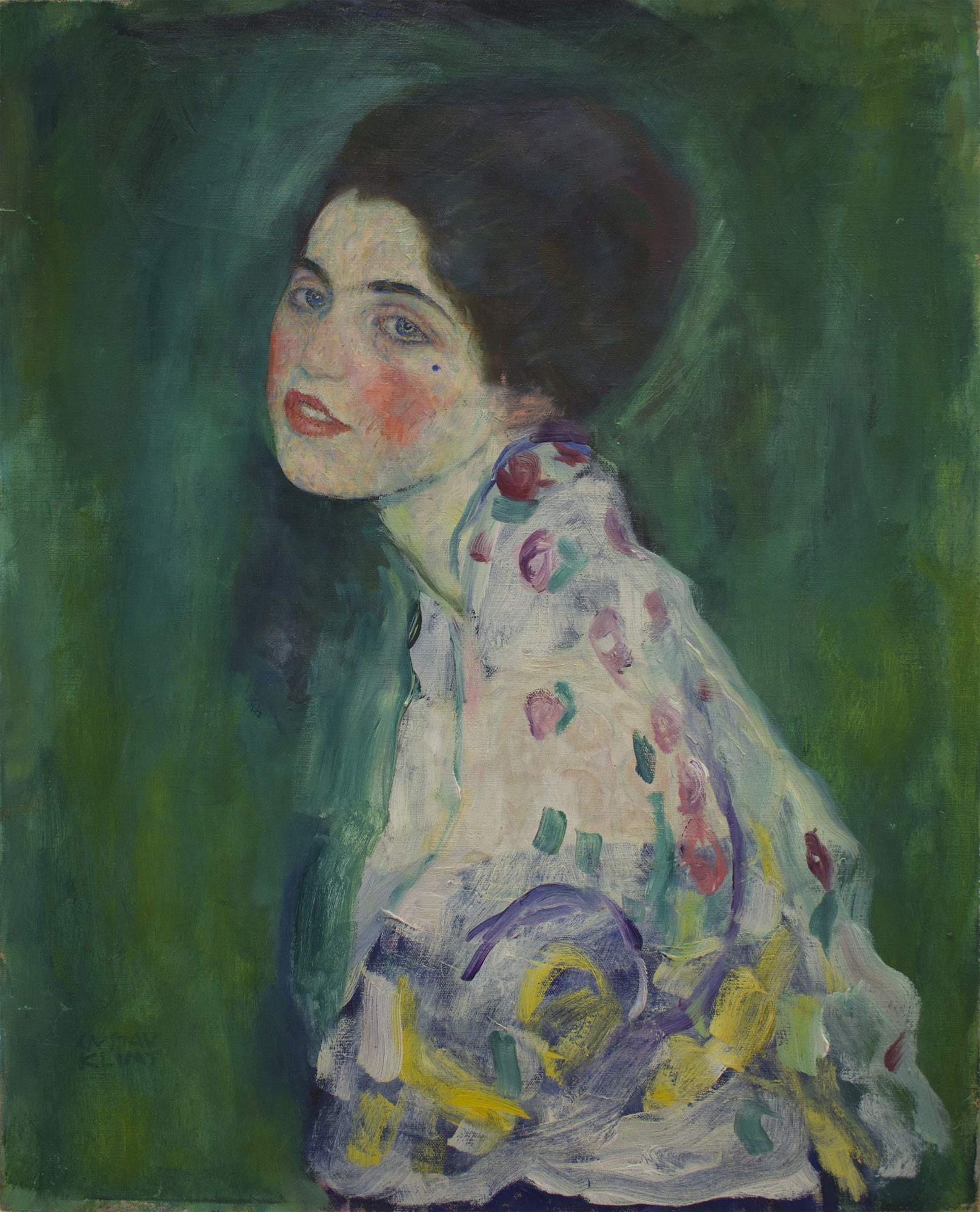
Klimt’s relationship with Italy is further analyzed in three sections: his first Venice Biennale in 1899 and his second, most important one in 1910, at which he had an entire room available to present twenty-two paintings that chronicled his last ten years of activity in the three strands of portraits, allegorical figures and landscapes. These included The Three Ages of Woman, Portrait of Adele Bloch-Bauer, Water Snakes II, The Friends (The Sisters), Portrait of a Lady in Red and Black, Kammer Castle II, and the Birch Forest. To the1911 International Exhibition in Rome , he brought eight paintings and four drawings from the period between 1902 and 1911 that were placed along the walls of a white semicircular apse-like room so as to give the entire room a sacred aura. The works include Water Snakes I, Death and Life, and the Portrait of Emilie Flöge. Finally, the presence of only one painting by Klimt at the II Roman Secession of 1914, Portrait of Mäda Primavesi, at which works by artists such as Vittorio Zecchin, Felice Casorati, and Galileo Chini were also exhibited, in which the influence of Klimt’s art is notable, particularly in Zecchin’s Court of Princesses and Princesses in the Garden and Casorati’s The Prayer , where the clothes and the surrounding landscape are made up of mosaic motifs.
The last two sections are devoted to two real gems, namely The Bride, a monumental unfinished masterpiece Klimt was working on when his death surprised him in 1918. It is one of the largest paintings of his entire production in which he addresses the theme oflove and sensual desire. Here, too, the sensuality of the nude bodies alternates with the strong chromaticism and ornamental motifs of the robes: standing out among them all is the bride in the center dressed in a deep blue dress, asleep, her face close to that of her husband, among female figures floating in space in various positions to represent total sexual fulfillment. And finally, the rediscovered Portrait of a Lady from the Ricci Oddi Gallery in Piacenza. Completed in the last phase of the artist’s activity, between 1916 and 1917, the painting was purchased in 1925 by Giuseppe Ricci Oddi, the only private collector in Italy to own a painting by Klimt. In 1997, the painting was stolen and was found after more than 20 years, in 2019, in a black bag inside a niche in the museum’s courtyard. This is the first time the work has come out of the Ricci Oddi since its return to its home, and there is thus an opportunity to admire it here at Palazzo Braschi after so many years.
The rediscovered painting thus closes an exhibition that has been so long awaited, about which there have been so many expectations and which at the end of the visit are fully satisfied. Not only for the presence of such a large nucleus of works from Vienna, but also for the comprehensible and well-divided itinerary between the various stages and themes, for the at times evocative staging, for the display of little-known works such as The Bride , which left the Klimt Foundation for the first time, and of jaw-dropping masterpieces such as Judith I. And again, for the innovative project that allowed the reconstruction of the original colors of the Faculty Paintings, but above all for recounting a hitherto little-studied aspect such as the relationship with Italy to which the exhibition devotes, as mentioned above, various passages and entire sections. For all these reasons, as well as for the accompanying catalog with expert contributions (one flaw the lack of worksheets), the Roman exhibition at Palazzo Braschi deserves to be visited at leisure to fully enjoy it. A word of advice: be prepared, however, to arm yourself with patience if you want to stay in front of your favorite work for a few more moments... it is an exhibition where you are unlikely to find few people, given the large influx of visitors it attracts every day.
Warning: the translation into English of the original Italian article was created using automatic tools. We undertake to review all articles, but we do not guarantee the total absence of inaccuracies in the translation due to the program. You can find the original by clicking on the ITA button. If you find any mistake,please contact us.